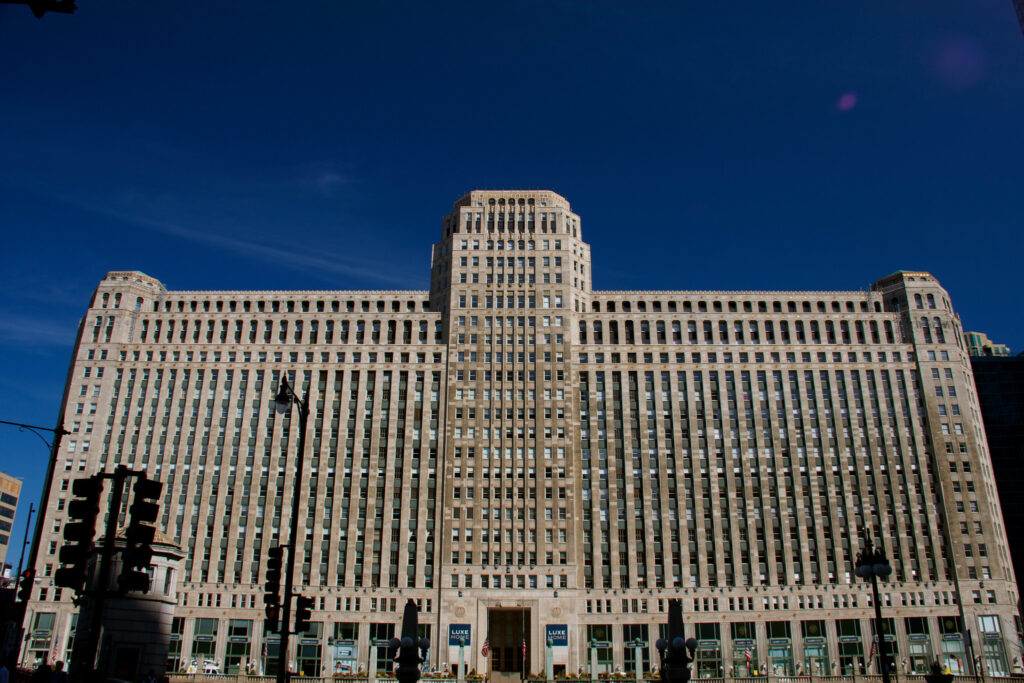After three years of working from home, U.S. employers are trying to bring employees back to the office – but nationwide office occupancy rates are still struggling to reach 50% of pre-pandemic levels. Even if a few companies manage to shift back to full-time onsite office work, it’s clear that remote work and hybrid work models are the future of corporate life – reducing demand for commercial real estate and generating bigger stockpiles of unused cubicles. Employers are facing a long-term glut of empty office space, unused office furniture, unneeded equipment, and other surplus assets.
All these empty offices might be bad news for water cooler salesmen, but they could be good news for the planet. Employers have a new opportunity to transform the way they manage their surplus assets. Instead of a traditional liquidation approach to surplus office equipment, employers should adopt a circular economy approach, focused on sustainability and next best use. By embracing circularity, companies can reuse and repurpose their empty offices to boost their bottom line – and help save the planet from climate change.
Let’s see how a circular economy approach can help your organization recoup value from your unused office equipment and other surplus assets.
The Circularity Gap: Too many office assets are not being reused
According to the 2023 Circularity Gap report, the global economy is only 7.2% circular – meaning that more than 90% of all the materials extracted and produced are being wasted, lost, or unavailable for reuse and recycling. A big part of this sustainability problem is the built environment. 38% of total material input into the global economy consists of “stock build up,” such as buildings, infrastructure, and machinery and equipment. Workplace resources such as office furnishings contribute to this circularity gap: less than 1% of furniture gets recycled, while 80% of it ends up in landfills.
People’s everyday consumer decisions have a carbon footprint, such as driving a car vs. riding a bicycle vs. taking public transit. So do the decisions made by business leaders. Companies can repurpose surplus assets in a way that reduces carbon emissions by keeping items out of the landfill, and extend the useful life of assets in a circular economy.
If half of employees no longer need to come to the office, this represents a huge shift in how enterprises use their real estate. Companies have an opportunity now to rethink the ways that they use their office real estate and other workplace resources.
Ask yourself:
- If your organization only needs 50% of your office space, what can you do with the other half of those workplace assets – can you sell, reuse, recycle or donate them?
- What if you could get more precise and strategic about how to liquidate unused equipment and surplus assets in a way that helps reduce carbon emissions?
- What if liquidating extra space and unused office furniture – instead of a quiet back office function or a negative item on a balance sheet – could become a prominent positive success story for your company? What if this could make you a leader in sustainability, and help build goodwill with your customers and the communities you serve?
Embodied carbon: How to reduce carbon emissions with unused office furniture
Carbon emissions are becoming a bigger part of the public conversation about climate change and sustainability, but one of the most important aspects of carbon emission is often overlooked and misunderstood: embodied carbon.
Carbon emissions are not just caused directly by burning coal or driving gasoline-powered cars (Scope 1 emissions). Carbon is built into our built environment. Every new office building, every new piece of office furniture, every new product that gets manufactured and shipped to your home or office requires carbon emissions to be made (Scope 3 emissions). This built-in carbon cost is called “embodied carbon.”
When office buildings go vacant instead of being reoccupied and repurposed, this represents wasted money and carbon emissions. When surplus workplace resources get thrown away instead of being reused, there is a cost to the climate in the form of embodied carbon. Every material item that ends up in a landfill requires carbon emissions to manufacture, and every material item that does not get reused causes carbon impact by requiring new items to be made.
By reusing unused office furniture, companies can save money and reduce carbon emissions – by tracking the embodied carbon value of the items that they divert from the landfill. Sustainable reuse can help your company achieve your net zero carbon emissions goals, and become part of the solution to climate change.
Rethinking traditional liquidation: Circular economy for office equipment
With office space at 50% occupancy, the time is right for companies to capitalize on the reuse of previously purchased workplace assets. Here are a few ways that enterprises can get more strategic about repurposing unused office furniture:
- Get visibility into your workplace resources: Many companies don’t have a clear picture of exactly which office resources they have, where the resources are located, and which parts of the company might have unmet needs. Rheaply can help companies gain visibility into their existing workplace resources with a digital catalog. This helps you avoid duplicate procurement and make better-informed supply chain decisions.
- Collaborate with resource exchange partners: “One person’s junk is another person’s treasure,” and the same is true of unused office furniture. Your surplus office equipment that is taking up space in a warehouse might be badly needed by a fast-growing startup, a nonprofit organization that’s looking to save money on equipment costs, or even another department within your enterprise. Instead of sending unused equipment to a landfill, focus on next best use – selling it, re-using it, repurposing it within the company, or donating it to nonprofit partners. Rheaply can help organizations track your resources, evaluate your assets, and create an ecosystem of partners for exchanging resources – with external buyers, donation recipients, and internal business partners.
- Quantify your climate impact: It’s getting easier and more precise than ever before to track the exact carbon impact of your businesses’ workplace resources. Every time you can prevent some unused workplace resources from going to the landfill, you are reducing carbon emissions by a measurable amount. Rheaply can help you track the impact of your organization’s embodied carbon avoidance with detailed reporting dashboards, in a way that supports your overall carbon emissions and sustainability goals.
Most employees are not going back to the office full-time. But this doesn’t mean that your office space and office equipment is worthless; instead, this is an opportunity to re-tool your workplace resource management to be more sustainable and circular. By reusing, repurposing, and selling your unused office furniture in a strategic way, your company can save money, drive new revenue, and reduce carbon emissions.


